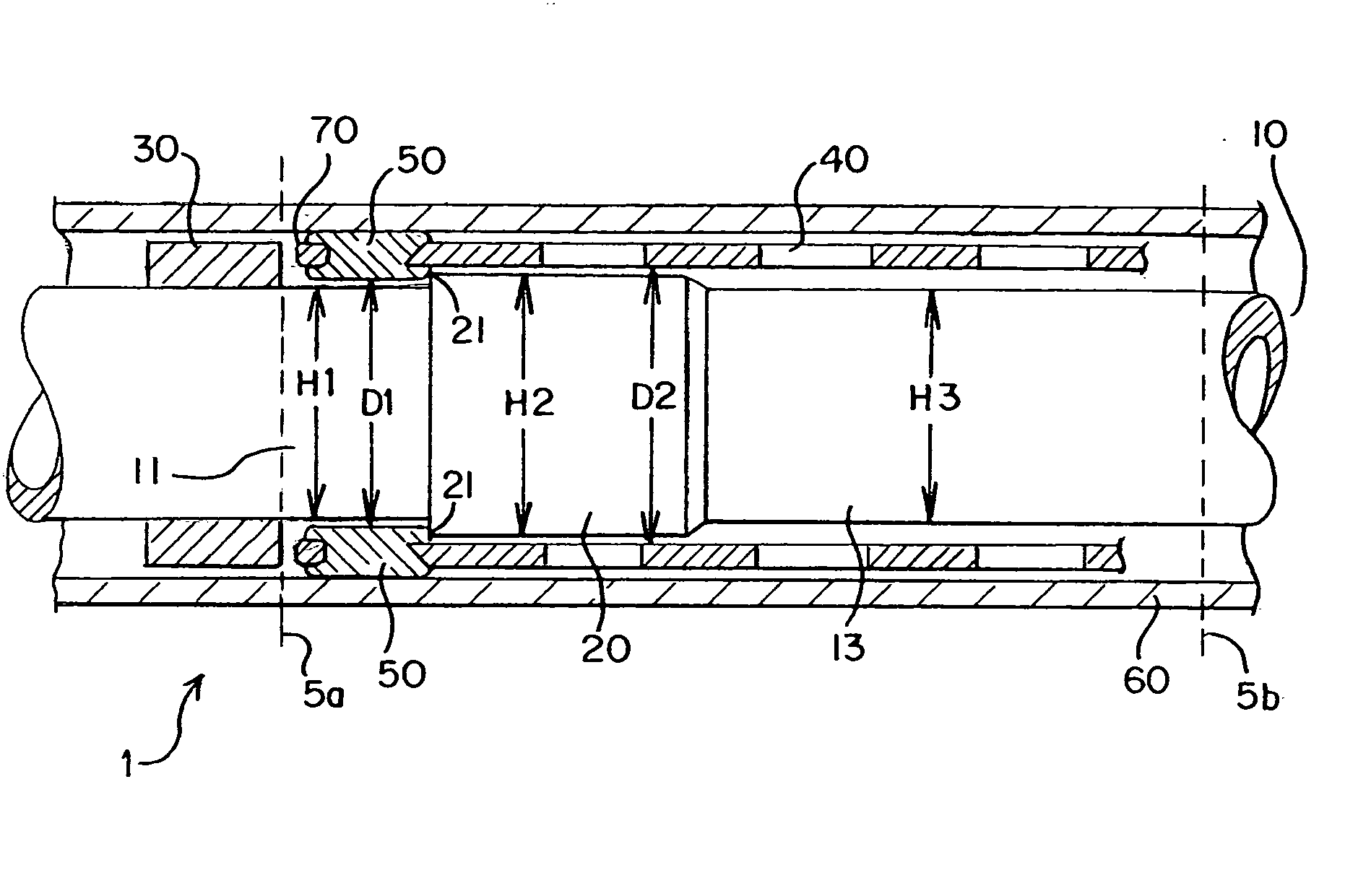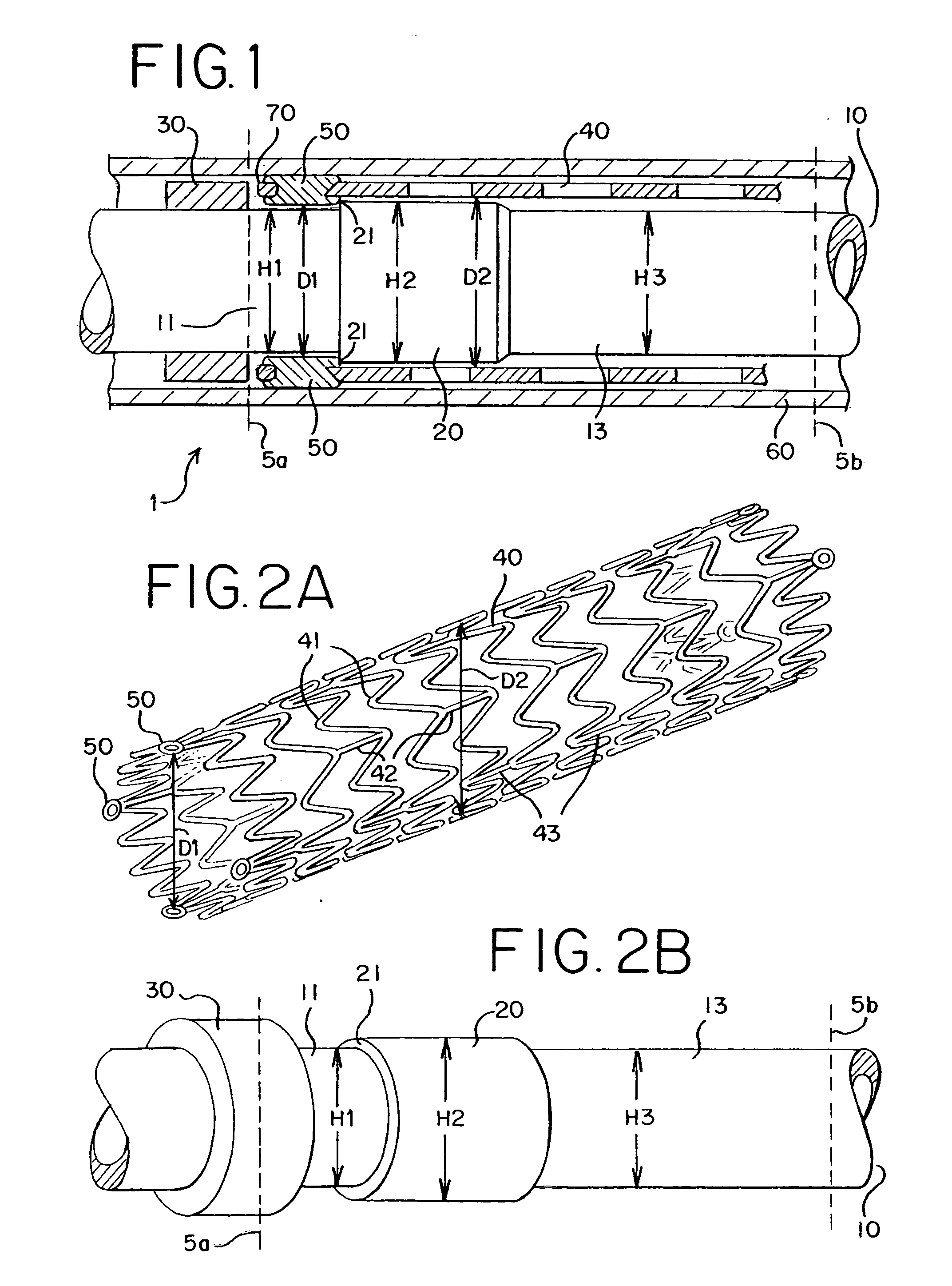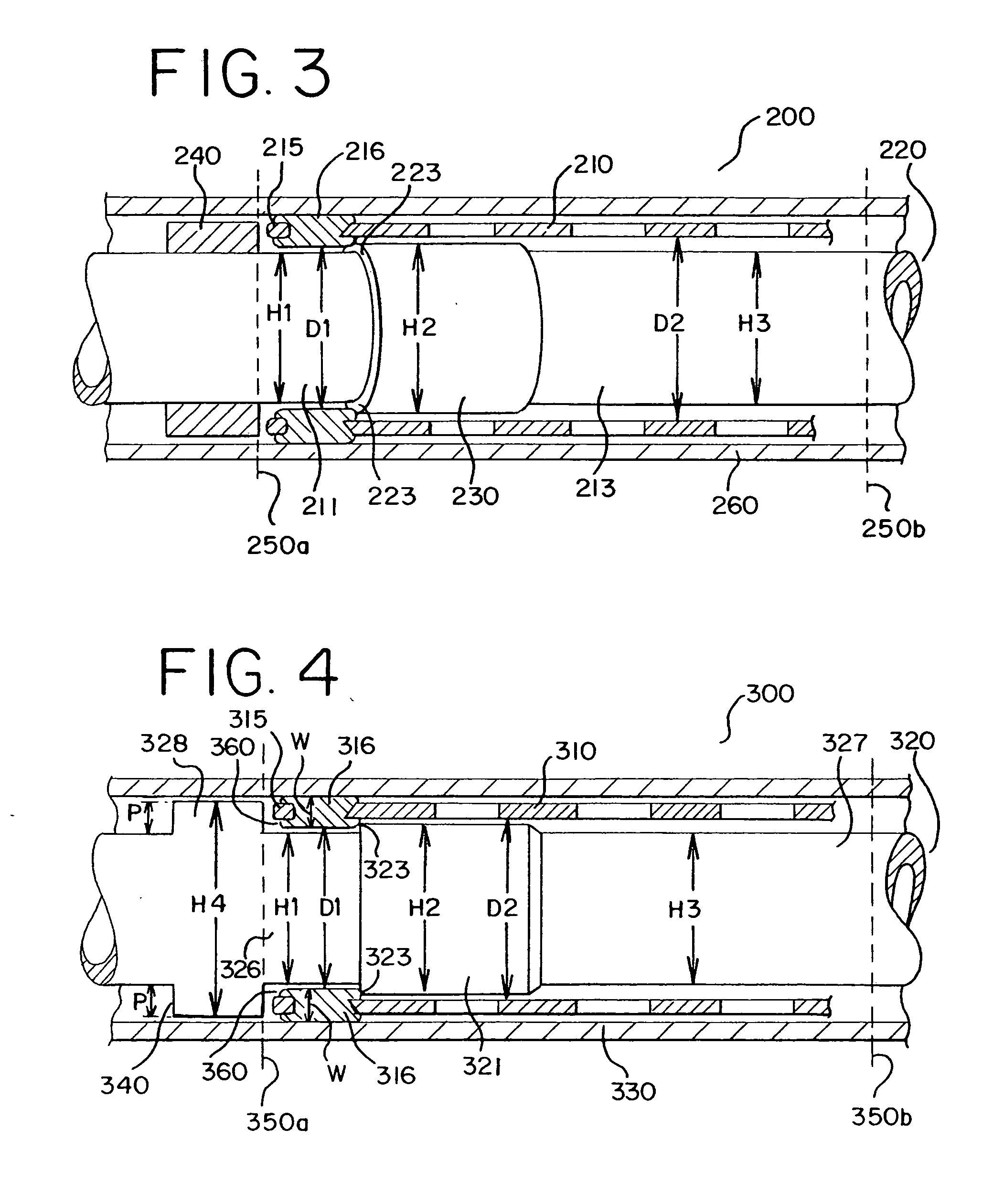Stent delivery system allowing controlled release of a stent
a delivery system and stent technology, applied in the field of stent delivery system, can solve problems such as overlap of the stent and interfere with the shoulder
- Summary
- Abstract
- Description
- Claims
- Application Information
AI Technical Summary
Benefits of technology
Problems solved by technology
Method used
Image
Examples
first embodiment
[0030]FIG. 1 shows a stent delivery system 1. The stent delivery system 1 comprises a sheath 60 and a holder 10. The sheath 60 and the holder 10 have a tubular shape and extend from a proximal end 5a to a distal end 5b. A holder band 30 is positioned at the proximal end 5a. A stent 40 is interposed between the sheath 60 and the holder 10. The stent 40 comprises at least one eyelet 70 and at least one rivet 50.
[0031] The sheath 60 applies pressure to the stent 40 so that the stent 40 remains in a collapsed state. The holder band 30 extends radially around the holder 10 as shown in FIGS. 1 and 2B. The holder band 30 may be made of any material but is preferably rigid and hard. The holder band 30 blocks a longitudinal movement of the stent 40 as the sheath 60 is pulled rearward. Thus, the holder band 30 prevents the stent 40 from moving along with the retracted sheath 60.
[0032] Preferably, the stent 40 is in a collapsed state during delivery as shown in FIG. 1. The stent 40 is a self-...
second embodiment
[0046]FIG. 3 shows a stent delivery system 200. The stent delivery system 200 includes a sheath 260, a stent 210 and a holder 220. The stent 210 has a first portion comprising eyelets 215 and rivets 216 attached to the eyelets 215. The first portion has a first inner diameter D1, which is smaller than a second inner diameter D2. The stent 210 has a second portion having the second inner diameter D2 as shown in FIG. 3. The holder 220 comprises a proximal section, i.e., a first section 211, a second section and a distal section, i.e., a third section 213. The first section 211 has a first diameter H1 and the second section has a second diameter H2, which is larger than H1. The third section 213 has a third diameter H3, which is smaller than or the same as the first diameter. The diameters H1, H2 and the inner diameters D1, D2 have small dimensions. A holder band 240 is positioned at a proximal end 250a to block the rearward movement of the stent 210 when the sheath 260 is retracted.
[0...
third embodiment
[0049] a stent delivery system 300 is shown in FIG. 4. The stent delivery system 300 includes a stent 310, a holder 320 and a sheath 330. The holder 320 includes a bump 321 and is designed to make the holder band 340 an integrated part. Accordingly, the holder 320 includes a proximal section, i.e., a first section 326, a second section having the bump 321, a distal section (i.e., a third section 327), and a holder band section (i.e., a fourth section 328), as shown in FIG. 4. The holder band 340 needs to have a distance (P) that is sufficient to receive eyelets 315 of the stent 310. Accordingly, the holder band section 328 has a diameter H4, which is larger than the two diameters H1 and H2, as shown in FIG. 4. As discussed above, the diameters H1 and H2 are about 0.053 and 0.059 inch, respectively. The diameter H4 is about 0.075 inch. Each distance P, as shown in FIG. 4, is typically 0.022 inch per side. The width W of each eyelet 315 is about 0.025˜0.027 inch. The third diameter H3...
PUM
 Login to View More
Login to View More Abstract
Description
Claims
Application Information
 Login to View More
Login to View More - R&D
- Intellectual Property
- Life Sciences
- Materials
- Tech Scout
- Unparalleled Data Quality
- Higher Quality Content
- 60% Fewer Hallucinations
Browse by: Latest US Patents, China's latest patents, Technical Efficacy Thesaurus, Application Domain, Technology Topic, Popular Technical Reports.
© 2025 PatSnap. All rights reserved.Legal|Privacy policy|Modern Slavery Act Transparency Statement|Sitemap|About US| Contact US: help@patsnap.com



